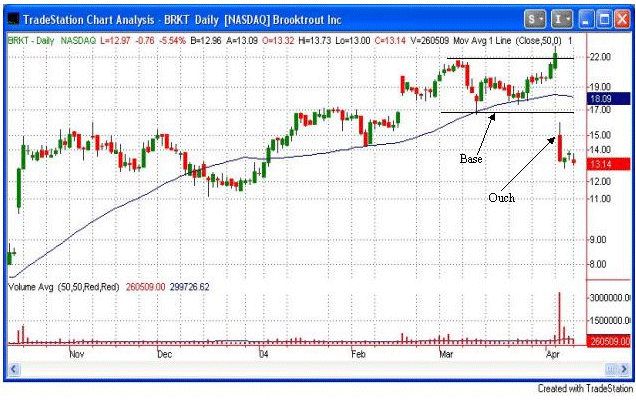This Is The Most Important Aspect Of Any Trading Plan
The
market rose today, but volume came in lighter on both the Nasdaq and
NYSE. The S&P 500, Nasdaq, and Dow have all formed cup & handle formations. A
high-volume move through the top of the handles could ignite this rally
further. Over the past two weeks I have seen more stocks completing bases that I
have in a very long time. If the market can break out, I believe it will be
accompanied by some of the best new-high breadth we’ve seen in years.
Opportunities to buy breakouts should be abundant. If the indices can’t pull off
this trick, and instead fall below the low of their handles and their 50-day
moving averages, then we’ll probably see a huge number of pattern failures and
breakouts that reverse. Keep sharp. This week could be very interesting.
As anyone who reads my column
regularly knows, I believe technical analysis is an excellent tool to time
position entries and exits. Much of the technical analysis I use is based on
pattern recognition. Other traders may prefer to use other kinds of technical
indicators to time their trades (oscillators, overbought/oversold indicators,
volatility bands, moving average crosses, etc.). The main point of any technical
analysis technique is to put probabilities in your favor–“probabilitiesâ€
being the key word. Even the best patterns and indicators are wrong sometimes.
Many traders make the mistake of believing too much in their analysis, and
forget that the most important aspect of any good trading plan is money
management.
When something goes wrong with
a trade, they worry that their indicators or analysis missed something. They try
to “learn†from the mistake by studying in more detail the pattern in
question. They eventually will come up with a reason that the pattern or
indicator failed. Most of the time this new made-up reason is bogus. If a lot of
money is lost on one trade, many times the lesson to be learned does not involve
the trader’s analysis technique, but rather their money management technique.Â
Let’s
look at an example from last week to illustrate this point.
(
BRKT |
Quote |
Chart |
News |
PowerRating) caught my eye last
week. Its stock rallied from $8 to nearly $22 in about 5 months after gapping up
and breaking out last October. On Friday, April 2, it moved to the top of
a somewhat odd-looking consolidation pattern and looked like it was preparing to
break out to new highs. On Monday, April 5, it did break out, and volume came in
at more than twice the average daily levels. At 4:00 PM, BRKT looked like it had
just started a new leg up and was about to rally higher once again. A little
later, the company released an earnings warning and that analysis was trashed.
 
The next morning, BRKT opened
down about 33%. Today it was trading down over 40% from the April 5
closing price. If you take a closer look at the chart you may be able to find
some flaws in the base. Those flaws are not the reason the pattern didn’t
work. The earnings warning was the reason the trade failed. Sometimes technical
analysis can provide clues that bad news is about to be released. In this
instance I do not see any such evidence. Even an imperfect pattern like the one
above should lead to further upside a good percentage of the time.
Failed patterns are a hazard of
technical analysis. Just as important as it may be for a trader to understand
the reason why one of their trades didn’t work, it is equally or more important
to understand the risk they are taking when they enter a trade. No matter what
your technique, there will always be a good number of trades that don’t work
out. Make sure you don’t take on positions so large that bad news will put your
entire trading account in jeopardy. Drawdown is unavoidable. Getting wiped out
on one trade is your own dumb fault.   Play the probabilities and manage your
risk properly and your account should flourish. Ignore risk management and your
account may be in for a big shock someday. This concept of acceptable position
sizing is especially important as we enter earnings season.
Good Trading,
Rob Hanna
